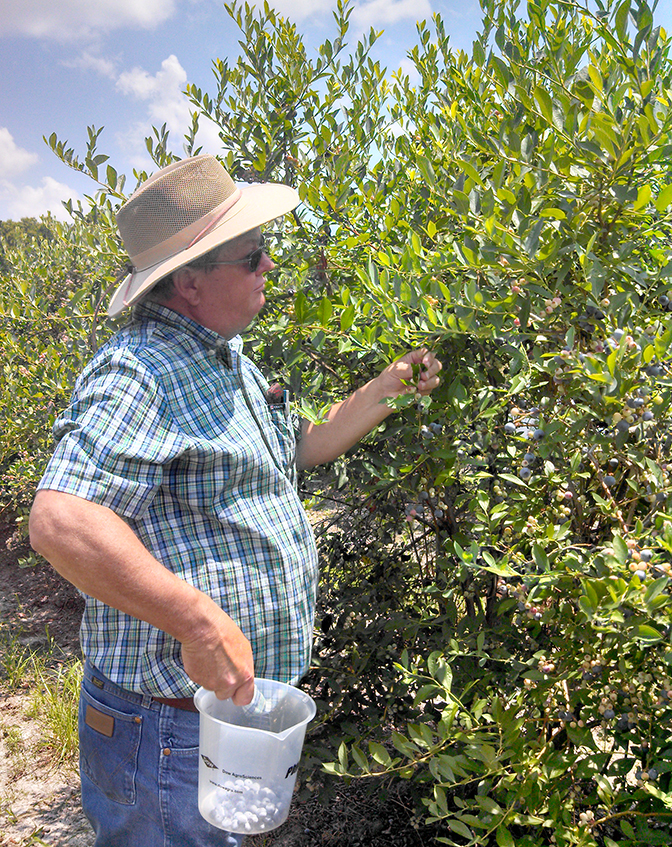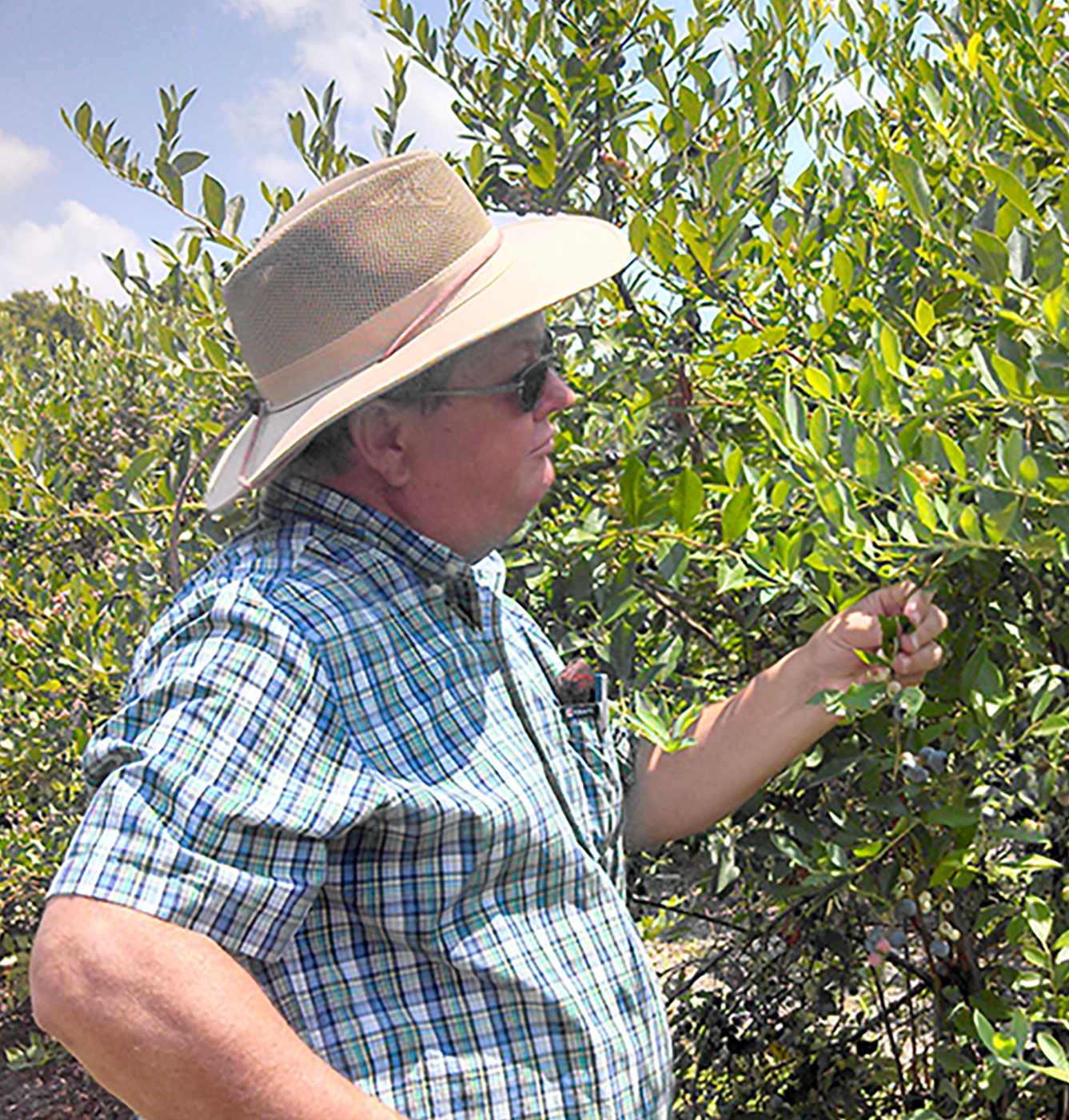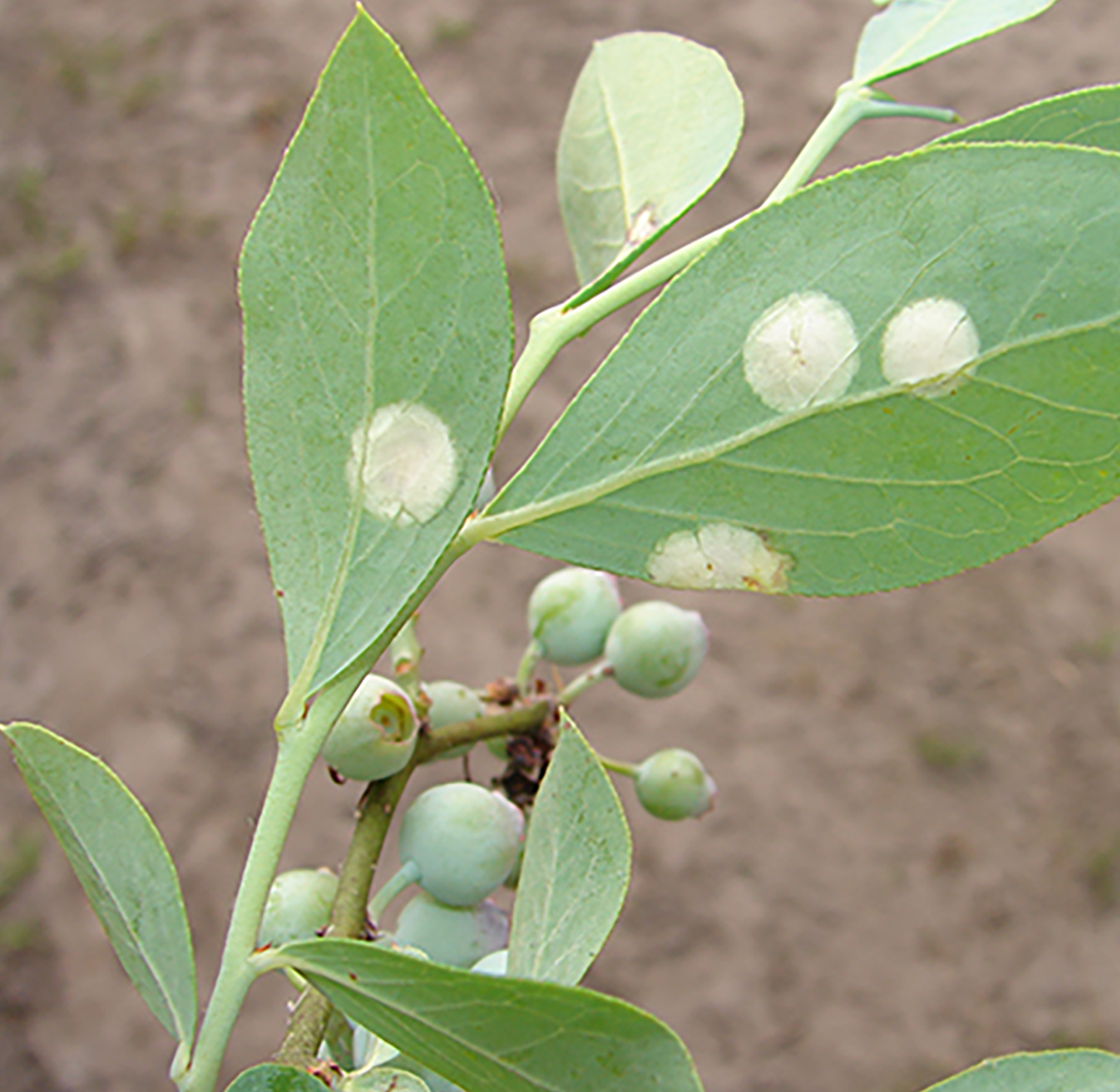University of Georgia researchers have found lime sulfur to be an effective option for blueberry farmers treating for Exobasidium leaf and fruit spot, a disease that affects the crop’s yield and marketability.
UGA plant pathologist Phil Brannen and Jeff Davis County Extension Coordinator Tim Varnedore have studied the treatment strategy since 2013. So far, lime sulfur has drastically reduced Exobasidium in Jeff Davis County.
“By using lime sulfur products, Exobasidium has almost become nonexistent in Jeff Davis,” Varnedore said. “We’re continuing to use the lime sulfur as a preventative, and so far it’s worked very well.”
Exobasidium is a relatively new fungal disease that causes a light-green to white spot on blueberry leaves and fruit. It can make the berry smaller and give it a bitter taste due to the fruit’s immaturity. Some berries abort in the field, but the greater issue occurs after harvest in the packing line, according to Brannen.
It is very difficult to sort out infected fruit from good fruit. In some cases, 30 to 40 percent of the fruit has a spot. Of the infected fruit, an average 16 percent is still very costly to the packing operations. When damage is high, 1 to 2 percent of infected fruit still inevitably make it to the supermarket shelf.
Even under high disease-pressure scenarios, lime sulfur has reduced in-field damage of berries to 1 to 2 percent. Sorting in the packing line reduces the number of berries entering the marketplace to near zero.
Because Exobasidium is a relatively new disease, it is harder to control, according to Renee Holland, UGA’s multi-county blueberry Extension agent in Southeast Georgia. She has seen numerous cases in the last two years. Along with Brannen and other county agents, she conducted multi-county spray trials in 2014 using lime sulfur as a treatment.
Though researchers are unsure how Exobasidium affects growers’ yields, they do know it affects the marketability of the blueberry. “The typical consumer doesn’t want spots on the fruit,” Holland said. “Exobasidium changes the taste and quality of the fruit.”
A research trial was started with rabbiteye blueberries after a Jeff Davis farmer’s fruit was rejected at the processing plant. The farmer reached out to Varnedore, who visited the grower’s field and discovered Exobasidium on his plants. The disease cost the grower nearly $1,000 an acre.
Lime sulfur is now used on roughly 8,000 acres of blueberries; it was not used prior to 2014. The combined management program has resulted in significant control of this disease with an estimated annual yield benefit of $2 million plus per year in returns to the blueberry industry.
With a farm gate value of $312.7 million in 2013, according to UGA’s Center for Agribusiness and Economic Development, Georgia is the top producer of blueberries in the United States. Jeff Davis County produced $2.2 million in blueberries.
(Jordan Hill is an intern with the College of Agricultural and Environmental Sciences.)









